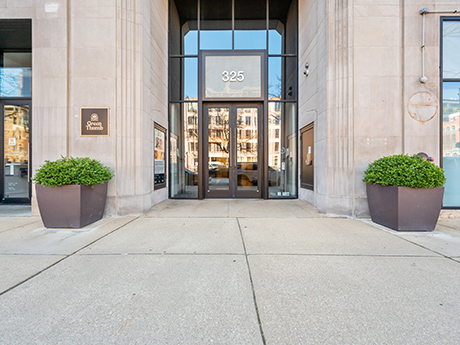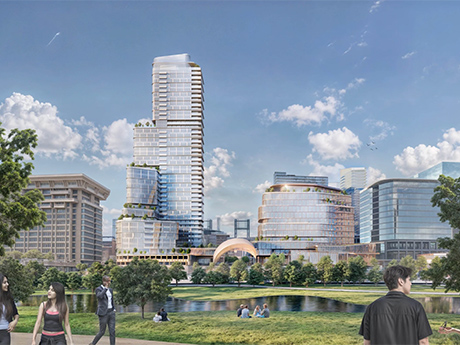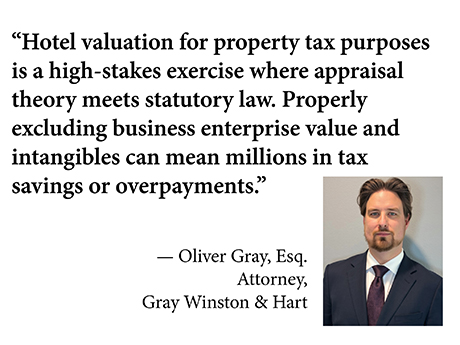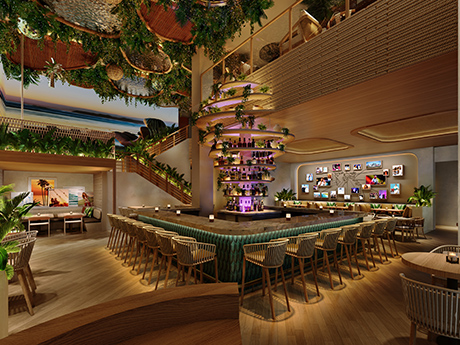By Nicole McAleese, Urban Innovations As autumn arrives, Chicago’s commercial real estate market continues to evolve in response to changing workplace strategies and a growing return-to-office (RTO) movement. With major employers tightening in-office attendance policies, both landlords and tenants are adapting to new demands around space, flexibility and location. Shift in tenant behavior Over the past year, Chicago has seen a noticeable shift in how companies are approaching their office needs. Where many tenants once sought short-term lease extensions or downsized footprints during the height of hybrid experimentation, 2025 has brought renewed interest in long-term planning and, in some cases, expansion. Several high-profile lease transactions underscore this trend. Stripe recently doubled its Chicago office space to 89,000 square feet, while law firm Arnold & Porter relocated from the Loop to a new 40,000-square-foot lease, according to Crain’s Chicago Business. While some firms continue to downsize or consolidate, there’s a clear cohort of companies reinvesting in physical office environments that support collaboration, talent attraction and cultural cohesion. These trends mirror national patterns. According to CRE Daily, a growing number of U.S. employers are enforcing stricter in-office attendance, accelerating the shift away from a purely remote or hybrid-first mindset. The Archie RTO …
Market Reports
— By Todd Hamilton of Citywide Commercial Real Estate — The Phoenix industrial market has felt like a game of pause and play over the past 12 months. A year ago, the sector hit pause amid election uncertainty. Post-election hopefulness reignited activity, but tariffs triggered another slowdown. Then came summer, which is always transactionally slow in Phoenix. This pattern was especially pronounced in the mid-size industrial segment, which was dominated by properties with less than 100,000 square feet. Typically owned by mom-and-pop investors or regional players, these groups lack institutional backing and are more sensitive to factors like interest rates, rising product costs and recession chatter. Despite the unpredictability, Phoenix industrial space has maintained its trademark resilience. Rents grew 4.7 percent year over year, per CoStar’s latest market report, while 787 sales were completed in the past 12 months, at an average price of $180 per square foot. Large-scale inventory (buildings 400,000 square feet and above) has also enjoyed a recent resurgence. At the start of the year, we were wringing our hands over multiple vacant, million-plus-square-foot buildings. Since then, five of those buildings have been leased or sold, with full occupancy expected by year-end. That activity accounts for a …
By Taylor Williams DALLAS — As a metroplex, Dallas-Fort Worth (DFW) has the physical sprawl, population density, pace of job growth and volume of housing development to fairly be labeled as one of the biggest consumer markets in the country, on par with New York City and Los Angeles. It’s the extent to which affordability has matured in New York City and Los Angeles that marks the key difference between DFW and the coastal behemoths. Aside from rental housing, no asset class within commercial real estate captures a given market’s affordability better than retail. Retail rents in the most sought-after corridors and districts of New York City and Los Angeles seemingly have no ceiling, and that is reflected in the prices of the products and services that are dispensed from those spaces. Editor’s note: InterFace Conference Group, a division of France Media Inc., produces networking and educational conferences for commercial real estate executives. To sign up for email announcements about specific events, visit www.interfaceconferencegroup.com/subscribe. It’s fair to assume that for most households that have relocated from the coasts to DFW, housing and jobs have been the most decisive factors. Yet retail spending does account for a good chunk of the average family’s disposable …
In the fourth quarter of 2024, the Orlando office market had the first quarter of positive absorption in four years, according to a recent Colliers market report. The market, like many across the nation, has navigated a period of recalibration in the wake of the pandemic and evolving work trends. Yet, a shift in tenant activity has signaled renewed leasing demand across the office landscape. In the fourth quarter, net absorption in the Orlando office market reached a positive 95,843 square feet. This is a significant improvement compared to the same period in 2023, which had a negative absorption of 297,714 square feet. Interestingly, it is the submarkets outside of Orlando’s central business district (CBD) that are shining. This is evident in two recent deals that are having a profound impact on the market. In December, we represented the seller when Charles Schwab purchased the Maitland Summit Office Park for $122 million. This was the largest office deal in Central Florida since 2021 and removed 500,000 square feet of Class A office space from the Maitland submarket, which is about 10 miles north of downtown Orlando. Around the same time, Mitsubishi signed a lease for 109,000 square feet in Lake …
By Emily Ackley, NAI DESCO The St. Louis retail market could be perceived as a contrasting story — national headlines continue to spotlight store closures and shifting consumer habits, and yet on the ground, St. Louis is working to write a quite different narrative. Vacancy rates remain tight, redevelopment projects are reshaping corridors and both suburban and urban districts are evolving to meet the demands of today’s consumers. It is not a market without its challenges, but St. Louis retail is far from stagnant. Market conditions As of the second quarter of 2025, the St. Louis retail market experienced a dynamic shift as a result of low vacancy rates, evolving consumer behavior and significant redevelopment projects across the St. Louis MSA. The overall retail vacancy rate stands at 4.7 percent, reflecting a 40-basis-point decrease quarter over quarter and an 80-basis-point decrease year over year, indicating a tightening market. Leasing activity remains robust, particularly in suburban areas of St. Louis, such as West County and St. Charles County, where vacancy rates have decreased by up to 140 basis points in the past year. This is being supported by a combination of steady population growth in the suburbs, shifting migration patterns and …
— By Jason Price of Commercial Properties Inc./CORFAC International — The Phoenix office market continues to show balance as leasing patterns shift and tenants prioritize smaller footprints. The metro’s office inventory totals 195.5 million square feet across roughly 9,000 buildings. Construction has edged upward year over year, with a little more than 900,000 square feet currently underway compared with 844,000 square feet a year ago. Another 1.5 million square feet is expected to deliver between 2025 and 2026, a restrained pace that should help prevent oversupply. This discipline has become critical as companies continue to right-size and lenders remain cautious. The overall market faces slower demand for large contiguous blocks, limited financing availability and an elevated level of sublease inventory that will take time to absorb. Most of the sublease space consists of second-generation Class A and B product in downtown and the Camelback Corridor, where tenants are evaluating long-term space requirements before recommitting. Even so, Phoenix’s fundamentals remain relatively healthy compared with many other metros. The city’s diversified economy, steady population inflow and expanding employment base continue to support leasing activity, particularly for move-in-ready suites of less than 10,000 square feet. Small-business confidence and the return-to-office movement among local …
By Oliver Gray, Esq., of Gray Winston & Hart Valuing hotels for property taxation is one of the most complex and contested areas in real estate appraisal. And unfortunately for hotel owners, improper assessment is common and costly. Unlike office buildings or warehouses, hotels are not just physical assets — they are operating businesses. This distinction requires appraisers to carefully separate the taxable real estate, which is land and improvements, from the nontaxable business enterprise and intangible assets. Failing to do so risks unlawfully taxing the business itself, a critical concern for Texas hotel owners and property tax professionals. Texas law mandates that assessors appraise property at its fee-simple market value, excluding exempt intangibles and business value. For hotels, this means appraisers cannot simply capitalize the income of the operating business. Rather, they must make adjustments to remove components tied to franchise affiliation, management expertise, brand recognition and other intangibles. The challenge is clear: How can assessors, taxpayers and their appraisers correctly isolate the real property value from the going concern? What follows are several common approaches and their inherent weaknesses, which can skew an assessor’s conclusions or provide bases to challenge inflated assessments. Management Fee Method One widely used — …
Louisville is a city full of history, charm and grit. We’re the birthplace of Muhammad Ali, home to the Kentucky Derby and the heart of America’s bourbon culture. As our city has grown, so have its business opportunities. Louisville’s geographic location, its logistics network and its diversified economy have attracted significant investment from global businesses to set down roots in recent years. In 2023, Louisville was named as a top 5 U.S. metro for economic development by Site Selection magazine with over $1 billion in capital investment and 2,300 new jobs that year alone. Louisville’s overall commercial real estate market has grown along with the population, but the office market has had a softer rebound following the pandemic than other markets nationally. Office overview In second-quarter 2025, Louisville had over 235,000 square feet of positive office leasing activity that was negated by over 256,000 square feet of negative net absorption, primarily due to large move-outs from office users in the city’s suburban submarkets. Leasing activity in Louisville’s Central Business District (CBD) has rebounded. In the second quarter, the submarket saw over 6,100 square feet of net positive absorption from Class A leasing activity, including the Jefferson County Sheriff’s Office lease …
By Lindy Beyer and Matt Rau, CBRE Kansas City is a special place. We have long been known for our renowned barbecue, jazz and most recently, as the city where Taylor Swift’s fiancé works. Retail is at the core of our city, attracting visitors from all over the world to experience our city’s welcoming and rich culture. As the metro area has grown, so has the retail market. We are currently experiencing a period of robust growth, fueled by a combination of strong suburban demand, exciting new mixed-use developments and the appeal of big box vacancies. Sports have been an additional driver as the city continues to invest in its athletic and entertainment offerings. These venues attract large crowds — generating foot traffic and boosting sales for nearby retailers. Retail occupancy rates in Kansas City have increased from 93 percent to 95.1 percent in the last five years, showing the strong overall demand in the market. This is especially notable as there have been over 2.6 million square feet of new retail space delivered over that same time frame, with a large portion contained in mixed-use developments. Overall growth in the Kansas City submarkets has triggered a higher demand for …
By Taylor Williams Dallas-Fort Worth (DFW) is a multifamily powerhouse, and after nearly three years of elevated interest rates, massive volumes of new deliveries and stagnated trading activity, the metroplex’s investment sales market may soon be showcasing that alpha status once again. Of course, that sentiment was prevalent at the very beginning of the year too. Optimism for lower interest rates and pro-growth policies understandably accompanied the arrival of the second Trump administration. Local factors, such as the peaking of the wave of new supply and the ever-steady flow of jobs and people into the metroplex, augmented that sentiment such that many multifamily lenders and investors entered 2025 with considerably more ebullience following a couple of rough years in 2023 and 2024. “Coming out of the gates, things felt pretty good, but a lot of this year’s volatility was based on [interest] rate movement, which was primarily based on geopolitical issues,” says Drew Kile, executive managing director of investments at Institutional Property Advisors (IPA), a division of Marcus & Millichap. “Had rates come down methodically more like the last two months, there would have been less of an impact. It’s hard for buyers to make decisions when rates are whipsawing …









